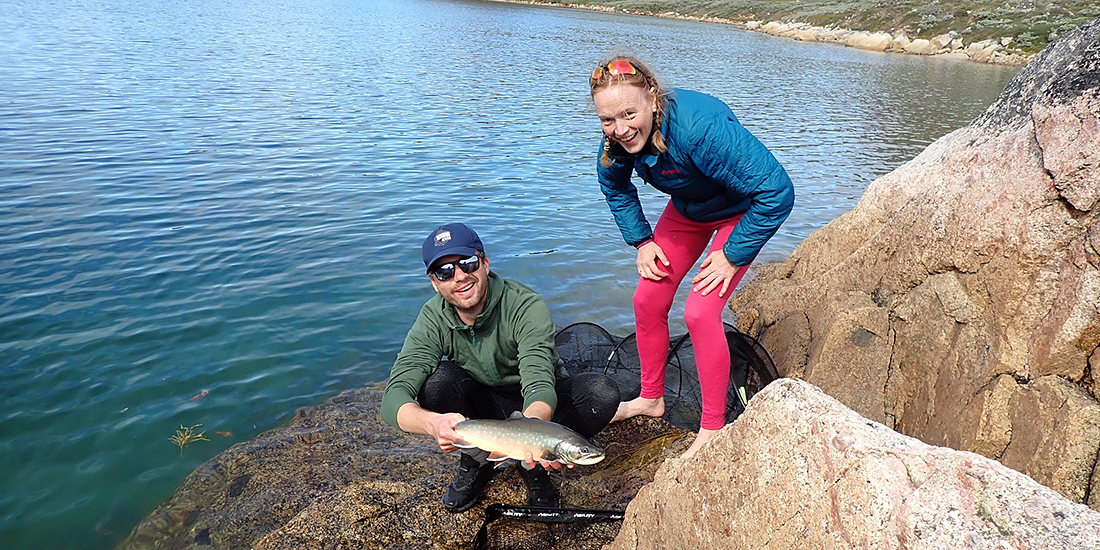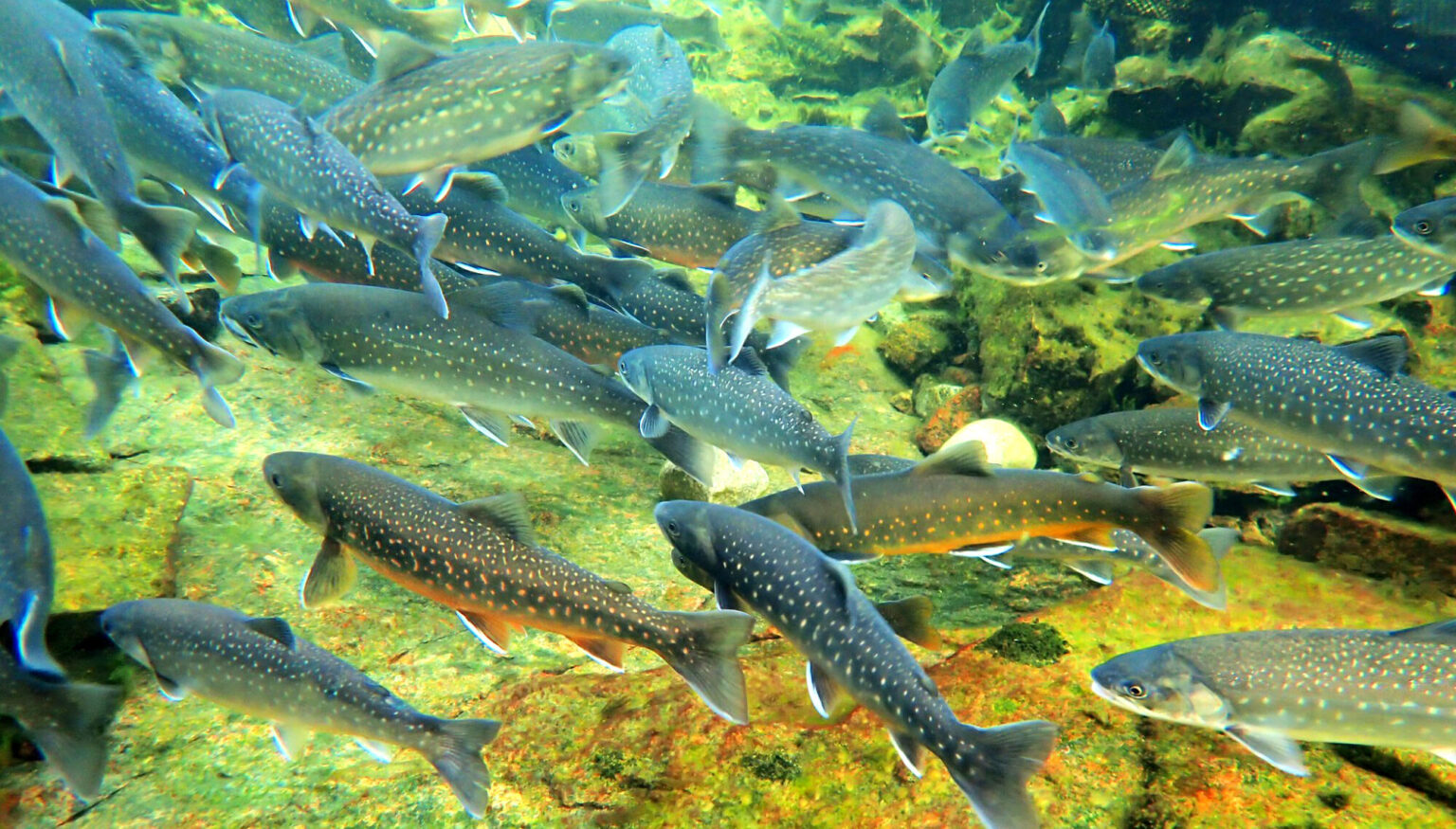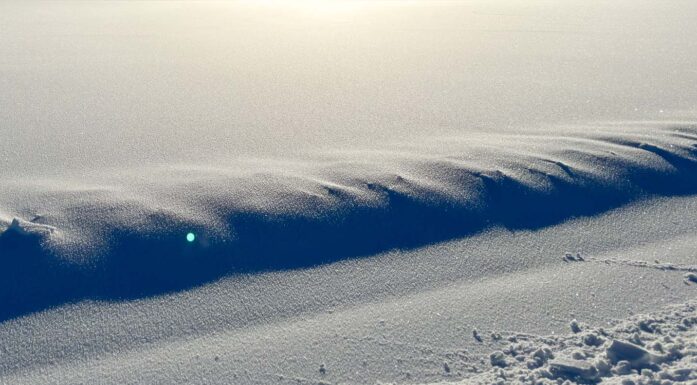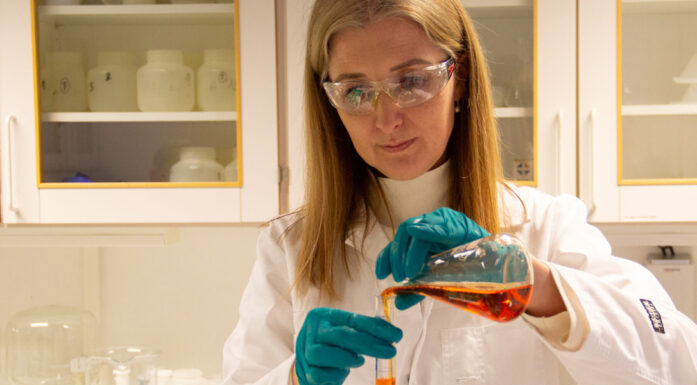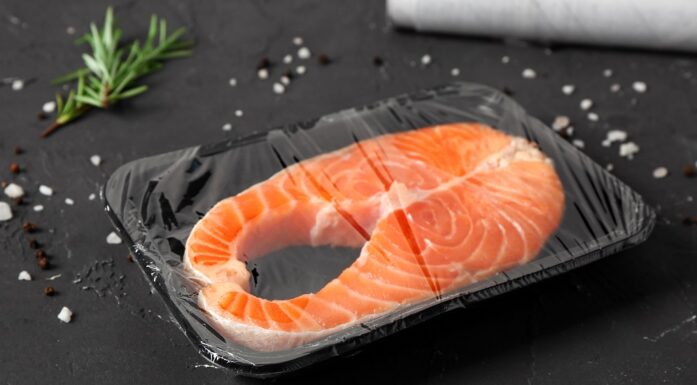Climate change in Greenland could cause trouble for arctic char
Greenland’s glaciers are melting and the surrounding seawater is getting warmer. How are arctic char coping with climate change? Scientists are in the process of figuring it out.
Arctic char like clean, cold water and can be found around northern Greenland, Svalbard, Alaska and in Arctic parts of Russia and Canada.
“Climate change is having the strongest impact in the north, and the arctic char is probably one of the fish that will be most affected. This species is very sensitive to temperature,” says Jan Grimsrud Davidsen. He is a scientist at the Department of Natural History, which is part of NTNU University Museum.
Davidsen has headed a research group that studied the life of arctic char in Greenland in 2021 and 2022.
“To be able to predict changes in ecology and the environment, we must first obtain a good overview of the current situation – a baseline to compare with.”
Tracking fish
In the autumn of 2021, scientists caught 85 arctic char in Greenland. The fish were anaesthetised, and a 1.5 centimetre long incision was made in the abdomen and a small computer chip was inserted. After the incision was stitched up, the fish were released back into the fjord, where 44 listening stations were positioned to pick up signals from the chips.
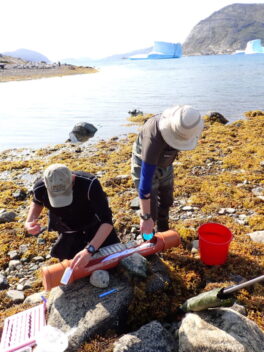
Jan G. Davidsen chips a arctic char while Adam Piper pours water over its gills to keep it alive. Photo: Ingrid Holøyen Skjærbakken
This enabled the scientists to obtain data on where the arctic char were located and what their body temperature was at any given time. Like other fish, arctic char are cold-blooded which means that their body is the same temperature as the water they are swimming in.
Winter without food
Arctic char spend their winters in lakes. When the lake ice melts, they leave the lake and head out into the fjord to find food. The results of the tracking showed that the arctic char in Tasersuaq, in southwestern Greenland, migrated out to sea around 14 May, approximately 14 days after the ice on the lake had broken up.
“Basically, arctic char go without food for ten months. They save energy and are very lean when spring arrives. During the 70-day feeding migration in the fjord, arctic char eat as much capelin as they can. They only have this period to fatten themselves up. By the end of July, the fish return to the lake to spawn and overwinter,” says Davidsen.
When the arctic char migrated out to sea, most of them stayed in the warmer water far into the fjord, near a glacier that has almost disappeared now. Only a small percentage of them migrated out to the inlet of the fjord and the colder water.
- You might also like: Early whaling eradicated species from local waters
With and without glaciers
In a new study underway, scientists will compare how fish behave in two different fjord systems.
One of the fjords borders several glaciers that produce large amounts of meltwater during the summer. The other fjord has no adjacent glaciers.
This latter example is what scientists expect will happen in Greenland – that the glaciers will melt away and that many fjords will be left without a supply of glacial meltwater.
In August 2023, 105 arctic char were caught and tagged in the same way as in the first baseline study.
The technology used to track the fish is called acoustic telemetry. The chip that is inserted into the fish sends a ping of ultrasound that is picked up by the listening buoys that are in the sea, five to ten metres above the seabed. The buoys cannot be positioned any higher because of the iceberg traffic floating out of the fjord.
One year of tracking
In a sample of the tagged fish, the chip also measures how fast the arctic char accelerate. This tells the scientists how active the fish are.
The scientists expect to get good data from 70–80 per cent of the fish.

The fish are caught using a rod, perhaps the most pleasurable part of the job. Photo: Ingrid Holøyen Skjærbakken
If a chip suddenly begins to report a body temperature of 36 degrees, that is bad news: it means the fish has been eaten by a seal.
The arctic char will be tracked for 400 days, until August 2024.
May change behaviour
What do you expect to find?
“We want to see how increases in water temperature affect fish behaviour. Arctic trout is a species that can vary between being a pure freshwater fish or migrating out to the sea during the summer.
The individuals that are in the warmest water grow the fastest, but arctic char only grow to a certain limit.
We believe that if they reach this limit more quickly, they will return to the lakes earlier.
However, if conditions in the lake change, and there is a greater production of available prey to eat there, it is conceivable that arctic char will skip their migration to the fjords and stay in the lake all year round.”
Confusing arctic char
If warm periods occur during the winter resulting in the lake ice melting, Davidsen is concerned that arctic char may think that summer is on its way and start their feeding migration far too early.
“The consequence may be that the fish migrate out to sea too early while it is still too cold for them to grow. They will then have to use more energy than they can store.”
Instead of gaining an advantage by migrating out to sea, it becomes a disadvantage that can have major consequences in the form of having less opportunity to reproduce.
Seeing changes
The scientists have noticed that climate change is already affecting wildlife on the world’s largest island.
Previously, polar bears arrived on ice floes from East Greenland in the summer and rounded the southern tip of the island before they came ashore in Nanortalik in West Greenland. In the Inuit language, Nanortalik means ‘bears’ gathering place’.
The ice floes have now become thinner, and polar bears have begun to go ashore further south and east on the island.
“We had to equip ourselves with weapons in case a bear got too close. This wasn’t necessary 20 years ago,” says Davidsen.
His research group collaborates with another group of international scientists studying sediment transport, water chemistry and salinity in the same two fjords. By exchanging data, everyone gets a more complete picture of the ecology of the two fjord systems.
In addition to mapping behavioural changes caused by climate change, Davidsen believes that knowledge about arctic char is useful in nature management, so that the fish are not too heavily fished during critical phases throughout the year.
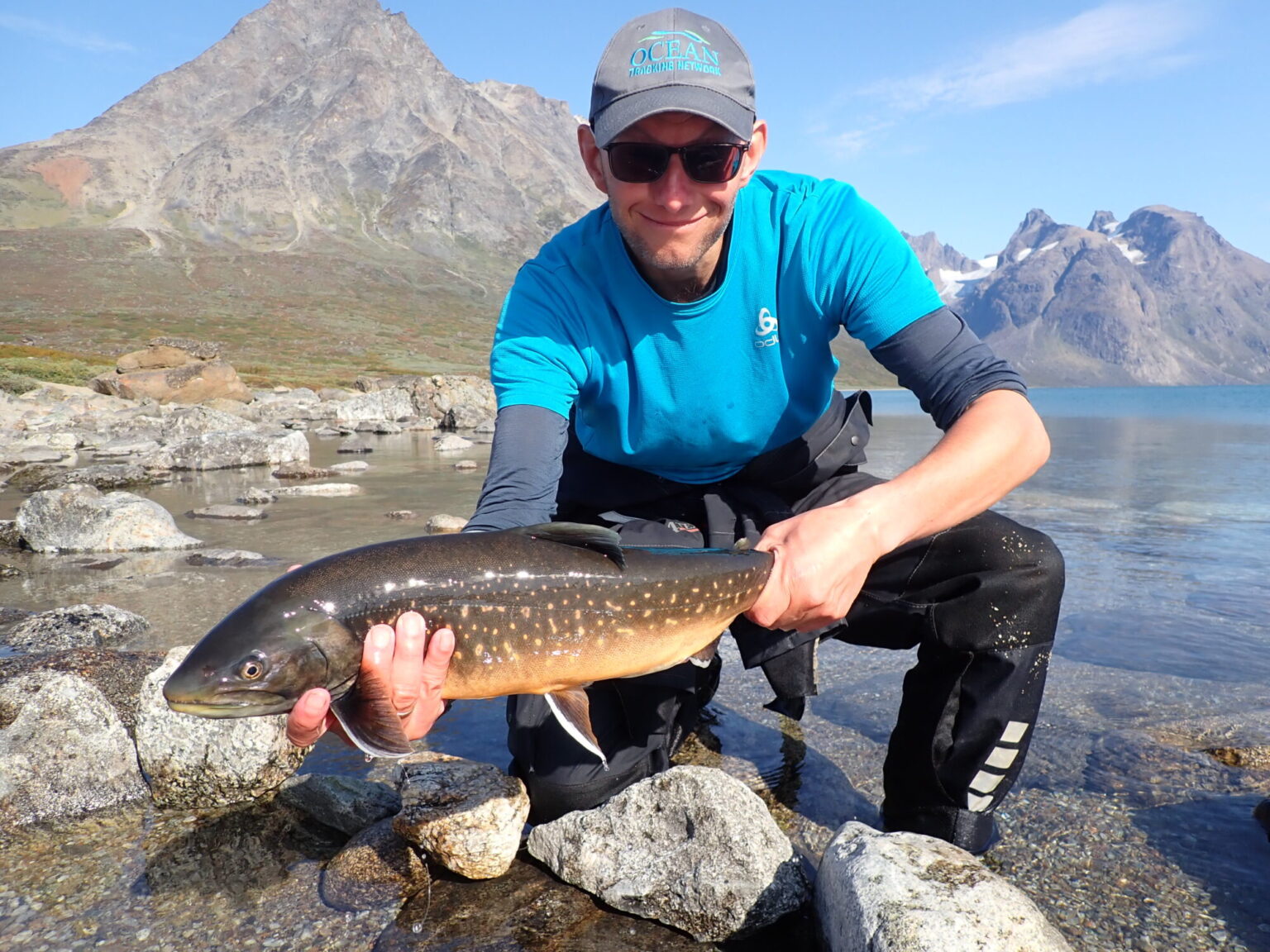
Jan G. Davidsen with a beautiful arctic char caught in Lake Tasersuaq in Greenland. Photo: Adam Piper
The arctic char is a culturally important fish in Greenland, which is fished both in the fjords and in the lakes. During certain periods, arctic char is an important element in the diet of many local families.
In addition to NTNU researchers, scientists from the UK, Bulgaria, Belgium, Canada and Switzerland are participating in the project supported by the universities, Norsk Hydro’s fund for scientific research and the Ocean Tracking Network.
Facts about arctic char
Arctic char is a salmonid that lives in the far north of the northern hemisphere.
There are two variants of arctic char, freshwater char and arctic char, but there is no genetic difference between the two.
Arctic char is an anadromous species, which means it finds its food in the sea and regularly visits rivers and fresh water to overwinter, preferably in cold rivers and deep lakes.
Arctic char are similar to trout and have a characteristic red/orange belly. They are widespread in Norway from Nord-Trøndelag and thrive in Arctic regions.
